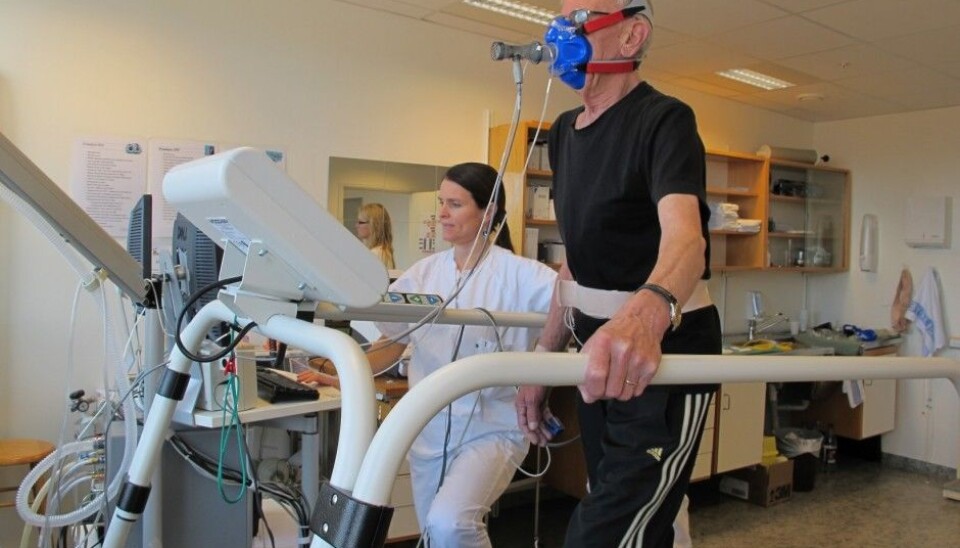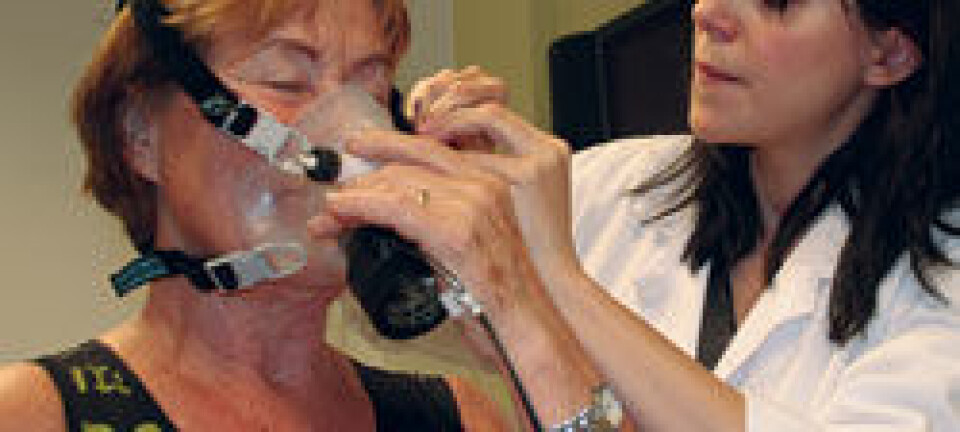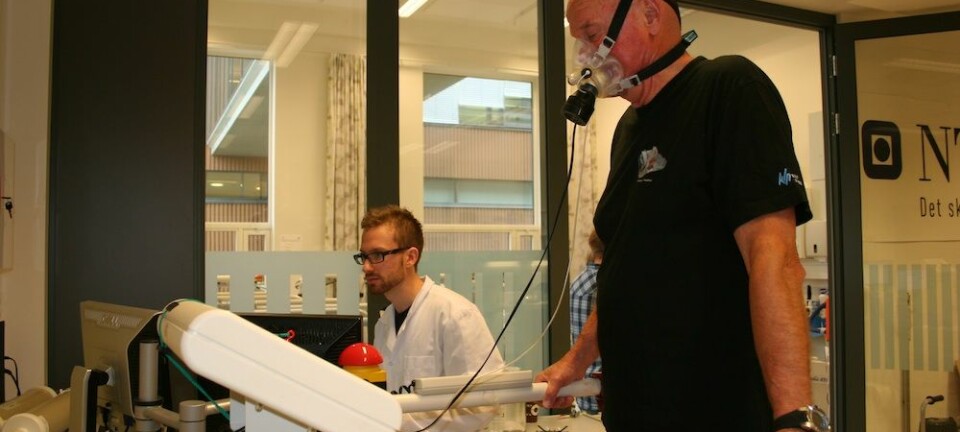This article was produced and financed by The Norwegian School of Sport Sciences

Exercise boosts recovery after lung cancer surgery
Patients who underwent surgery for lung cancer benefited from exercising shortly after their procedure. With close guidance and a personal trainer many of the patients improved their physical fitness level beyond their starting point.
Denne artikkelen er over ti år gammel og kan inneholde utdatert informasjon.
Doctoral research fellow Elisabeth Edvardsen at the Norwegian School of Sports Sciences have, together with Oslo University Hospital, conducted a study to investigate the effects of training in patients who recently underwent lung cancer surgery.
The study included 61 patients who had surgery for lung cancer. They were split into two groups; one group were offered to follow a high intensity endurance and strength training program for 20 weeks while the other group were instructed not to do anything out of the ordinary. The physical fitness level of the patients were assessed prior to the surgery, six weeks post surgery and again six months later.
"The study found exercise to have a great effect on both endurance and strength. Some patients even improved their physical fitness level compared to before removing part of or a whole lung. Those who exercised also gained muscle mass, which is very important," says Elisabeth Edvardsen.
Monitored closely
The routine consisted of high intensity endurance and strength training based on general training principles. Many patients are left with only one lung and are not used to exercising. All the participants were monitored closely by a personal trainer and physical therapist during the training period. They exercised for 60 minutes three times per week for 20 weeks. Most of the patients had no history of being physically active and little experience exercising but they were easily motivated.

"More than 90 percent of the subjects went to their local gym every week. Being monitored closely by professionals is the key to success. By following a high intensity training program the patients were able to improve their physical fitness level more quickly. Something which also improved their quality of life," says Edvardsen.
Running up the stairs
Henry Behn, who underwent surgery for lung cancer, took part in Edvardsen's study. The 68-year-old was formerly a heavy smoker but he is doing well since exercising after the surgery.
"I eased into it after my procedure. Now, I can easily run up the stairs and my personal best in the leg press is 180 kilos," says Henry Behn to NRK.
Faster recovery time
Patients suffering from lung cancer are more likely to be seniors. Most of them have been smoking for a number of years and have developed COPD, cardiovascular disease and breathing difficulties. This leads to inactivity. Post surgery, their physical condition has deteriorated even further. Thus, it is important for these patients to start exercising right away.
"According to our study, the training program improved the patients' endurance after lung cancer surgery. They also became stronger, increased their lung function and their quality of life was better. We have documented that the patients were able to improve their physical fitness level by exercising. And, these findings can be used to help other patients recover more quickly. But, the patients need to be provided with professional guidance and help along the way," says Edvardsen.
-------------------------------------
Read the Norwegian version of this article at forskning.no



































